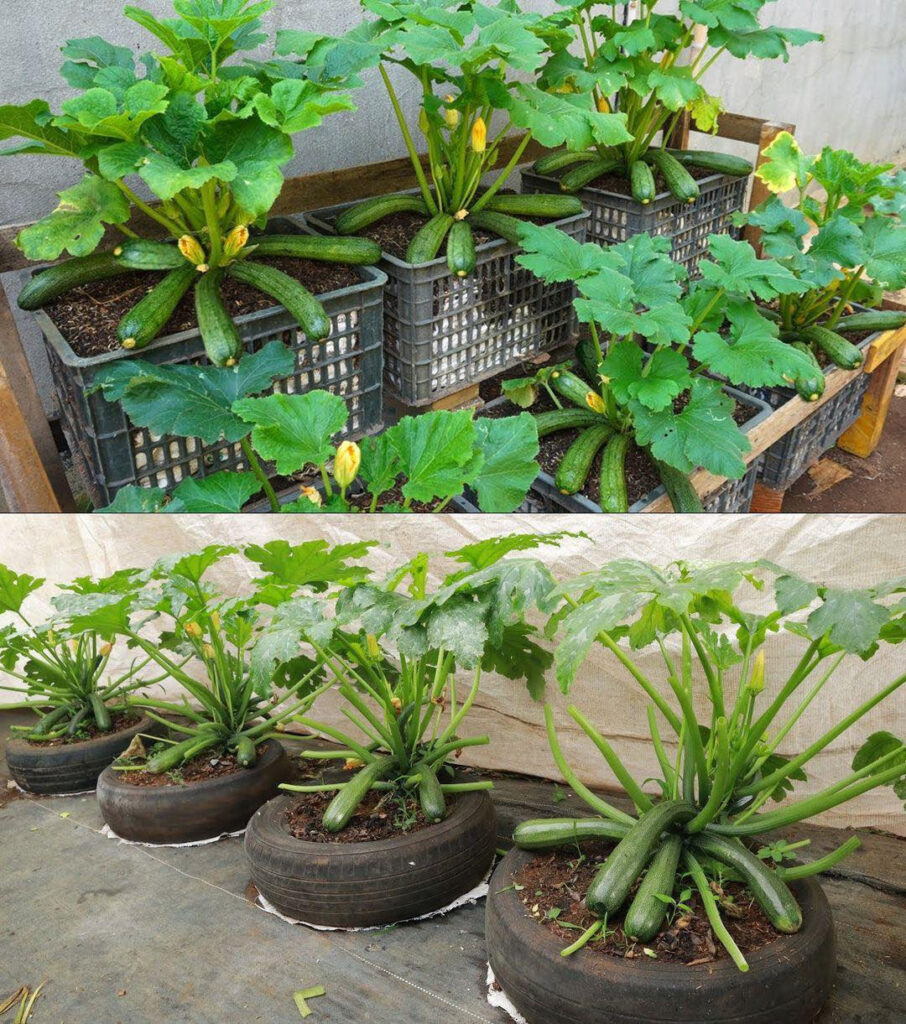Growing zucchini in your garden is a rewarding experience, and there are several techniques that gardeners use to ensure a successful harvest. Here’s a guide to growing zucchini in your garden using popular gardener techniques:
1. Selecting the Right Location:
- Sunlight: Choose a sunny location in your garden that receives at least 6-8 hours of direct sunlight per day. Zucchini plants thrive in full sun.
- Soil: Ensure the soil is well-draining and rich in organic matter. Loamy soil with a pH between 6.0 and 7.5 is ideal for zucchini.
2. Starting from Seeds or Seedlings:
- Direct Sowing: Zucchini seeds can be sown directly into the garden once the soil has warmed to at least 70°F (21°C) in spring.
- Transplanting Seedlings: Alternatively, you can start zucchini seeds indoors 3-4 weeks before the last frost date and transplant seedlings into the garden once the soil has warmed.
3. Planting Zucchini:
- Spacing: Plant zucchini seeds or seedlings about 3-4 feet apart in rows, or space them 2-3 feet apart in raised beds or containers.
- Depth: Plant seeds about 1 inch deep in the soil. For seedlings, plant them at the same depth as they were growing in their pots.
4. Providing Adequate Water and Nutrients:
- Watering: Keep the soil consistently moist but not waterlogged. Water zucchini plants at the base to avoid wetting the foliage, which can lead to fungal diseases.
- Mulching: Apply a layer of organic mulch, such as straw or shredded leaves, around the base of zucchini plants to help retain soil moisture and suppress weeds.
- Fertilization: Zucchini plants are heavy feeders. Apply a balanced fertilizer or compost before planting, and side-dress with additional fertilizer or compost during the growing season to provide essential nutrients.
5. Supporting Zucchini Plants:
- Staking or Trellising: While zucchini plants don’t typically require support, some gardeners choose to stake or trellis them to save space and keep the fruit off the ground. Use stakes or trellises to support the main stem as needed.
6. Pest and Disease Management:
- Monitor for Pests: Keep an eye out for common pests such as aphids, squash bugs, and cucumber beetles. Handpick pests or use organic insecticidal soap as needed.
- Preventive Measures: Practice crop rotation and remove plant debris to reduce the risk of fungal diseases such as powdery mildew.
- Companion Planting: Planting companion plants like marigolds, nasturtiums, or basil can help deter pests and attract beneficial insects to the garden.
7. Harvesting Zucchini:
- Timing: Harvest zucchini when they are young and tender, usually when they reach 6-8 inches in length and about 1-2 inches in diameter.
- Regular Harvesting: Harvest zucchini regularly to encourage continuous fruit production. Leaving overripe zucchini on the plant can signal to the plant to stop producing.
By following these techniques and providing proper care, you can enjoy a bountiful harvest of fresh zucchini from your garden throughout the growing season. Happy gardening!


